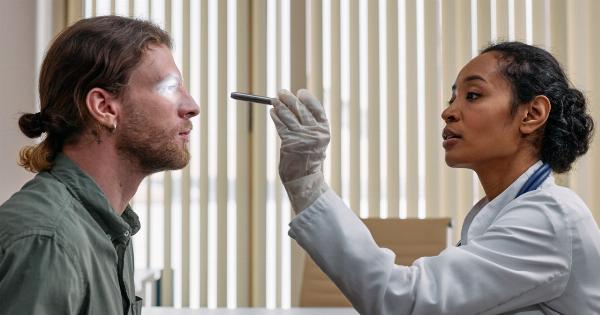Sexuality, as a concept, encompasses a vast array of elements that shape our identities and desires. It is a multifaceted construct that can be influenced by biology, culture, society, and personal experiences.
Exploring the layers of sexuality can help us gain a deeper understanding of ourselves and others, paving the way for acceptance, empathy, and positive change.
The Biological Basis of Sexuality
Biologically speaking, sexuality is a fundamental aspect of human nature. It encompasses the physical, hormonal, and genetic characteristics that determine our sex and reproductive capabilities.
While most individuals fit neatly into the male or female categories, there is also a spectrum of intersex individuals who possess combinations of male and female biological traits.
Furthermore, scientists have identified various biological factors that contribute to sexual orientation, including genetic, hormonal, and brain structure differences.
While these factors may help explain the diversity within human sexuality, they must be considered within the larger context of social and cultural influences.
The Role of Culture and Society
Culture and society play an essential role in shaping our understanding and expression of sexuality. Societal norms and values, religious beliefs, and cultural traditions significantly impact how we perceive and navigate our sexual identities.
For example, some cultures celebrate sexual diversity and recognize the existence of multiple genders, while others enforce strict binary notions of male and female.
The acceptance or rejection of homosexuality, transgender rights, and sexual education policies all vary across different societies, further highlighting the significance of cultural and societal influences on sexuality.
A Spectrum of Sexual Orientation
Sexual orientation refers to an individual’s enduring pattern of emotional, romantic, and/or sexual attractions to men, women, both genders, or neither gender.
While heterosexuality, or attraction towards the opposite sex, has historically been considered the norm, it is now widely recognized that sexual orientation exists on a spectrum.
At one end, individuals identify as homosexual, experiencing primary attractions to the same sex. At the other end, individuals self-identify as heterosexual, feeling primary attractions to the opposite sex.
In between, there exists bisexuality, pansexuality, asexuality, and various other non-binary identities that challenge traditional categorizations.
The Fluidity of Gender Identity
Gender identity refers to an individual’s deeply felt sense of their own gender, whether it aligns with their assigned sex at birth or not.
Traditional notions of gender are binary, with society expecting individuals to fit neatly into the categories of either male or female.
However, the reality is far more complex as many individuals identify as transgender, genderqueer, non-binary, or genderfluid.
These identities demonstrate that gender is not solely determined by biology but also by personal experiences, self-perception, and societal understandings.
The Intersectionality of Sexuality and Identity
Unpacking the layers of sexuality requires acknowledging the intersectionality with other aspects of identity, such as race, ethnicity, socioeconomic status, disability, and more.
These intersecting identities shape our lived experiences, affect our access to resources and rights, and impact how we navigate relationships and society.
For example, individuals who belong to marginalized communities may face unique challenges related to their sexuality due to societal prejudices or discrimination.
Intersectional approaches enable a more holistic understanding of human sexuality, encompassing the interconnected nature of various identities and experiences.
Social Constructs and Sexual Norms
Social constructs are collective agreements and perceptions that shape our understanding of reality. When it comes to sexuality, social constructs play a significant role in defining what is considered normal, acceptable, or taboo.
Sexual norms vary across cultures and societies, dictating expectations about sexual behavior, fidelity, modesty, and more. These constructs can impact how individuals perceive and express their sexuality.
Challenging and deconstructing these norms is crucial for creating inclusive and sex-positive environments.
Embracing Sexuality and Beyond
Unpacking the layers of sexuality should not only serve to understand and accept diverse sexual identities, but also to promote inclusivity, respect, and equal rights for all individuals.
Recognizing and embracing the fluidity and multifaceted nature of sexuality can contribute to positive social change.
Education, open dialogue, and respectful discourse are key in dismantling prejudiced beliefs and eradicating discrimination based on sexual orientation or gender identity.
By promoting understanding and empathy, we can create a world that celebrates and supports individuals across the entire spectrum of human sexuality.



























